Pacific Banana (1981)

Introducing Pacific Banana (1981): A Raunchy Ozploitation Comedy Classic
Overview
Pacific Banana, released on February 5, 1981, is an Australian *** comedy that epitomizes the bawdy, irreverent spirit of the Ozploitation movement of the 1970s and early 1980s. Directed by John D. Lamond, known for his work in Australian genre cinema, the film stars Graeme Blundell as Martin “Banana” Lassiter, a hapless pilot whose peculiar *** dysfunction drives the film’s comedic narrative. With a runtime of 82 minutes and an R rating, Pacific Banana is a product of its time, reveling in slapstick humor, full-frontal nudity, and double entendres. Funded partly by the South Australian Film Corporation, the film blends the cheeky style of British Carry On films with the uniquely Australian “ocker” comedy aesthetic. Despite mixed critical reception and modest box office success, Pacific Banana has developed a cult following for its unapologetic absurdity and nostalgic charm.
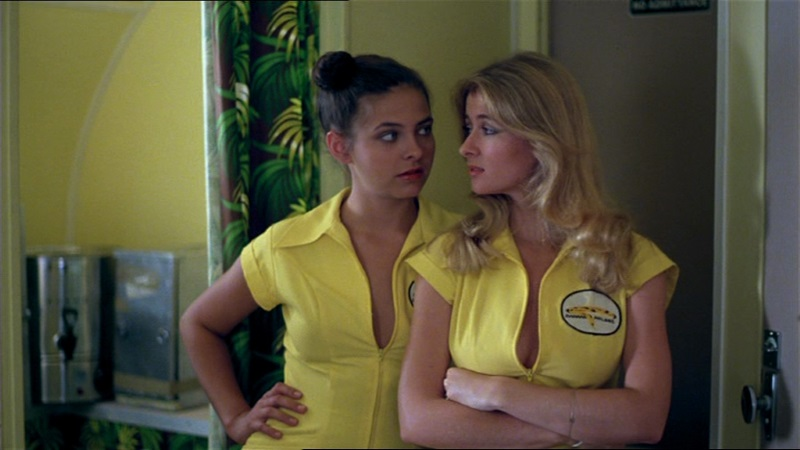
Synopsis
Set against the vibrant backdrop of the South Pacific, Pacific Banana follows Martin Lassiter (Graeme Blundell), a commercial airline pilot demoted to the ramshackle Banana Airlines after a scandal involving his boss’s wife, who falsely accuses him of making advances. The incident leaves Martin with a bizarre condition: he sneezes uncontrollably when aroused, leading to erectile dysfunction that becomes the film’s central comedic gag. Paired with Paul (Robin Stewart), a charismatic womanizer engaged to two stewardesses, Sally (Deborah Gray) and Mandy (Alyson Best), Martin navigates a series of misadventures across Polynesian islands, chasing romance while failing spectacularly due to his affliction.
The duo’s escapades take them to exotic locales, including the island resort of Candy Bubbles (Luan Peters), where a bevy of scantily clad women attempt to “cure” Martin’s problem, to no avail. Meanwhile, Paul’s relentless philandering complicates his relationships with Sally and Mandy, who remain loyal despite his indiscretions. Adding to the chaos is Julia Blandings (Helen Hemingway), the pigtail-wearing, love-struck daughter of Banana Airlines’ owner, Sir Harry Blandings, who follows Martin obsessively, determined to win his affection. The film culminates in a farcical resolution where Julia’s declaration of love miraculously cures Martin’s condition, allowing him to overcome his impotence in a predictably absurd finale. The iconic title song, with its cheeky refrain about a plane that “wants to go up, up, up, but always goes down, down, down,” encapsulates the film’s playful, innuendo-laden tone.
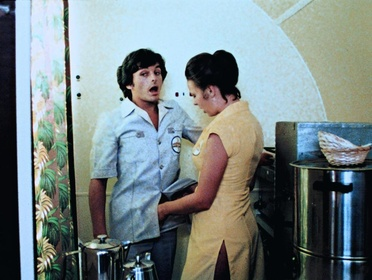
Cast and Characters
Pacific Banana features a colorful ensemble that leans into the film’s over-the-top humor:
- Graeme Blundell as Martin “Banana” Lassiter: The bumbling protagonist, Martin is a pilot whose sexual dysfunction drives the comedy. Blundell, a star of Alvin Purple (1973), brings a hapless charm to the role, making Martin both pitiful and endearing.
- Robin Stewart as Paul: A suave, womanizing pilot, Paul’s carefree attitude contrasts Martin’s romantic woes. Stewart, known for British TV’s Bless This House, channels a Carry On-style playboy energy.
- Deborah Gray as Sally: One of Paul’s fiancées, Sally is a vivacious stewardess caught in the film’s comedic chaos. Gray’s performance adds to the film’s risqué appeal.
- Alyson Best as Mandy: Paul’s other fiancée, Mandy complements Sally’s role, with Best contributing to the film’s parade of glamorous characters.
- Luan Peters as Candy Bubbles: The voluptuous resort owner, Candy leads a group of women attempting to help Martin. Peters, a British actress, adds a sultry flair to the role.
- Helen Hemingway as Julia Blandings: The airline owner’s lovesick daughter, Julia’s pursuit of Martin provides a sweet counterpoint to the film’s raunchiness. Hemingway’s youthful energy stands out.
- Supporting Cast: The ensemble includes Alan Hopgood as Sir Harry Blandings, Audine Leith, Angela Menzies-Wills, and Manuia Taie as various island characters, adding to the film’s quirky vibe.
Production Details

Directed by John D. Lamond, Pacific Banana was conceived as a spiritual successor to Alvin Purple, reuniting star Graeme Blundell and writer Alan Hopgood. Inspired by the bawdy humor of Carry On films, Lamond aimed to create a comedy series set in exotic locales, with potential sequels like Tokyo Banana or Guyana Banana. The film was funded by the South Australian Film Corporation, a decision that sparked controversy in the South Australian Parliament, as critics argued it undermined the corporation’s prestige after producing acclaimed films like Picnic at Hanging Rock (1975). Filming took place in Norwood Studios, Adelaide, and Tahiti, with the lush Polynesian settings providing a vibrant contrast to the low-budget production’s slapstick antics.
The film’s production faced challenges, including budget constraints that Lamond later regretted, noting that shooting in Queensland rather than Tahiti could have saved costs. Edited alongside Lamond’s horror film Nightmares (1980), Pacific Banana prioritized quick laughs over polish, with a runtime of 82 minutes. The cinematography captures the South Pacific’s beauty, though the focus remains on the cast’s comedic interactions and frequent nudity. The soundtrack, particularly the catchy title song, became a memorable highlight, with its cheeky lyrics resonating with audiences. Despite Lamond’s desire for a sexier tone, the film was toned down slightly to meet funding requirements, a compromise he felt diluted its potential.
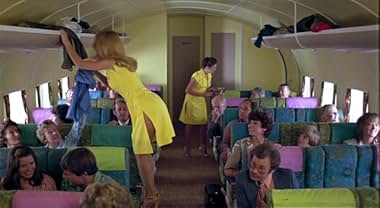
Reception and Critical Response
Pacific Banana received mixed reviews upon release, reflecting its niche appeal within the Ozploitation genre. On Rotten Tomatoes, it holds a 20% audience score based on over 100 ratings, with no critic reviews available, indicating its limited critical attention. Audience reactions range from derision to nostalgic affection, with one reviewer calling it a “juvenile comedy [that] will appeal to the Benny Hill set” (2/5 stars), while another praised it as a “hilarious sex comedy” comparable to Alvin Purple (3.5/5 stars). On IMDb, it scores a 4.4/10, with fans noting its “ludicrous” plot and “sex-positive” tone, though some criticized the repetitive sneezing gag as nonsensical.
Critics and audiences acknowledged the film’s dated humor and lack of narrative depth, with one IMDb user recalling watching it as a child and finding it “pretty hilarious… pretty bad.” However, its commitment to absurdity and the cast’s enthusiastic performances have earned it a cult following, particularly among fans of Ozploitation films. The 2008 documentary Not Quite Hollywood featured Lamond discussing the film, cementing its place in Australia’s exploitation cinema history. Its reputation as a “shithouse genius” work reflects its unpolished charm and influence on later sex comedies.
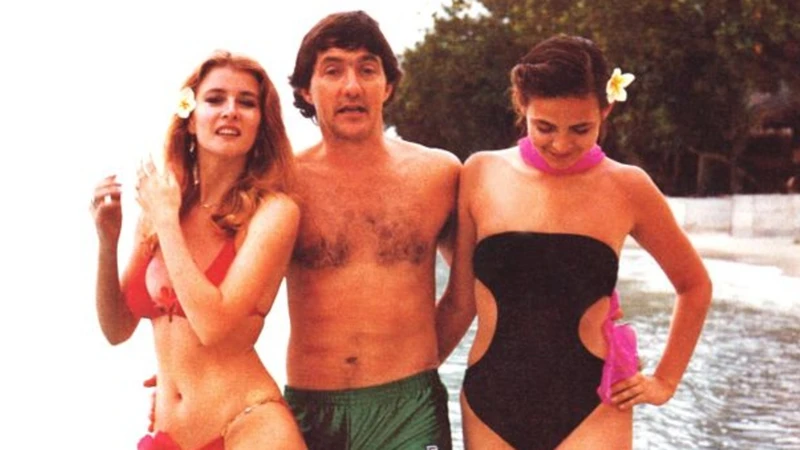
Plot and Themes
Pacific Banana is a quintessential Ozploitation comedy, prioritizing bawdy humor over social commentary. The plot revolves around Martin’s erectile dysfunction, triggered by sneezing, which serves as a running gag and a playful nod to the era’s fascination with sexual liberation. The film contrasts Martin’s romantic idealism with Paul’s carefree womanizing, exploring themes of masculinity and desire through a comedic lens. The Polynesian island settings and the airline premise evoke a fantasy of exotic escapism, while the inclusion of characters like Candy Bubbles and Julia Blandings reinforces the film’s playful, stereotype-driven humor.
Though devoid of deep social critique, Pacific Banana reflects the sexual revolution’s lingering influence, embracing a lighthearted, sex-positive attitude. Its slapstick style and innuendo-laden dialogue align it with British comedies like Carry On Abroad, while its Australian “ocker” sensibility—celebrating working-class irreverence—grounds it in local culture. The film’s absurdity, from Martin’s sneezing to the chaotic island escapades, is its primary draw, making it a time capsule of early 1980s comedic excess.
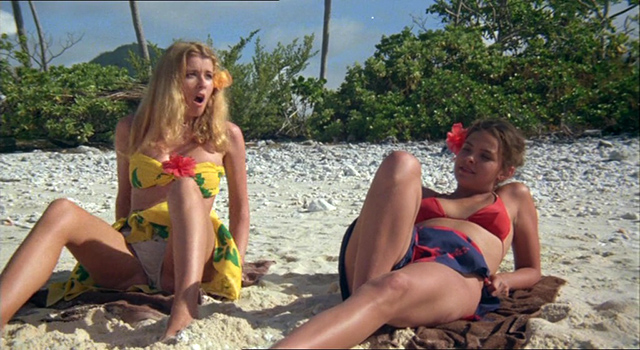
Release and Availability
Pacific Banana premiered in Australia on February 5, 1981, and was shown at the Cannes Film Festival on May 15, 1981, as part of the market screenings. It was released on VHS in 1982 and later on DVD, though it is not widely available on major streaming platforms like Netflix or Amazon Prime as of 2025. The film can be found on niche platforms like Vimeo On Demand or through specialty retailers, with some versions available for free on sites like Film1k. Its R rating reflects its explicit nudity and crude humor, making it suitable for adult audiences seeking retro comedy.
Marketing and Anticipation
At the time of its release, Pacific Banana was marketed as a cheeky follow-up to Alvin Purple, leveraging Blundell’s star power and the Ozploitation wave’s popularity. Posters and trailers emphasized the film’s scantily clad cast and tropical settings, targeting fans of raunchy comedies. The title song, with its memorable lyrics, became a promotional centerpiece, encapsulating the film’s playful tone. While it didn’t achieve the commercial success of Alvin Purple, its cult status grew through home video releases and retrospectives like Not Quite Hollywood. Modern audiences discover it through Ozploitation festivals or online platforms, with X posts occasionally praising its “ridiculous” charm or debating its dated humor.
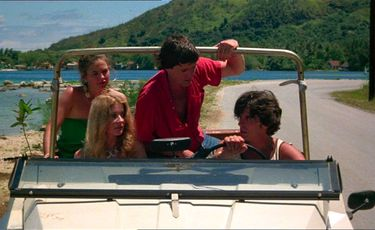
Legacy and Cultural Impact
Pacific Banana is a notable entry in the Ozploitation movement, a period of Australian cinema defined by low-budget, genre-driven films that embraced sex, violence, and humor. While not as iconic as Mad Max or The Man from Snowy River, it shares the movement’s audacious spirit, as highlighted in Not Quite Hollywood. Director John Lamond, often compared to Russ Meyer for his focus on bawdy comedies, contributed to the genre with films like Felicity and Nightmares. The film’s failure to spawn a Banana Airlines series disappointed Lamond and writer Alan Hopgood, who envisioned a global comedy franchise. However, its cult following endures, driven by nostalgia for 1980s sex comedies and appreciation for its unapologetic absurdity.
The film’s controversy in the South Australian Parliament, where it was criticized as a misuse of public funding, underscores its polarizing nature. Yet, its influence is evident in the way it paved the way for later sex comedies, particularly in the American teen comedy boom of the 1980s. Fans on platforms like Letterboxd celebrate its “sex-positive” vibe and “shithouse genius,” while acknowledging its dated elements, making Pacific Banana a fascinating relic of its era.

Conclusion
Pacific Banana (1981) is a quintessential Ozploitation comedy, blending raunchy humor, tropical escapism, and slapstick chaos in a way that captures the irreverent spirit of early 1980s Australian cinema. Directed by John D. Lamond and starring Graeme Blundell, the film’s absurd premise—centered on a pilot’s sneezing-induced impotence—delivers laughs through its commitment to bawdy excess. Though it lacks the polish or critical acclaim of other period films, its cult status, vibrant cast, and nostalgic charm make it a beloved artifact for fans of retro comedies. Whether you’re drawn to its cheeky humor, Polynesian aesthetics, or place in Ozploitation history, Pacific Banana remains a wild, unapologetic ride that invites viewers to embrace its ludicrous charm.